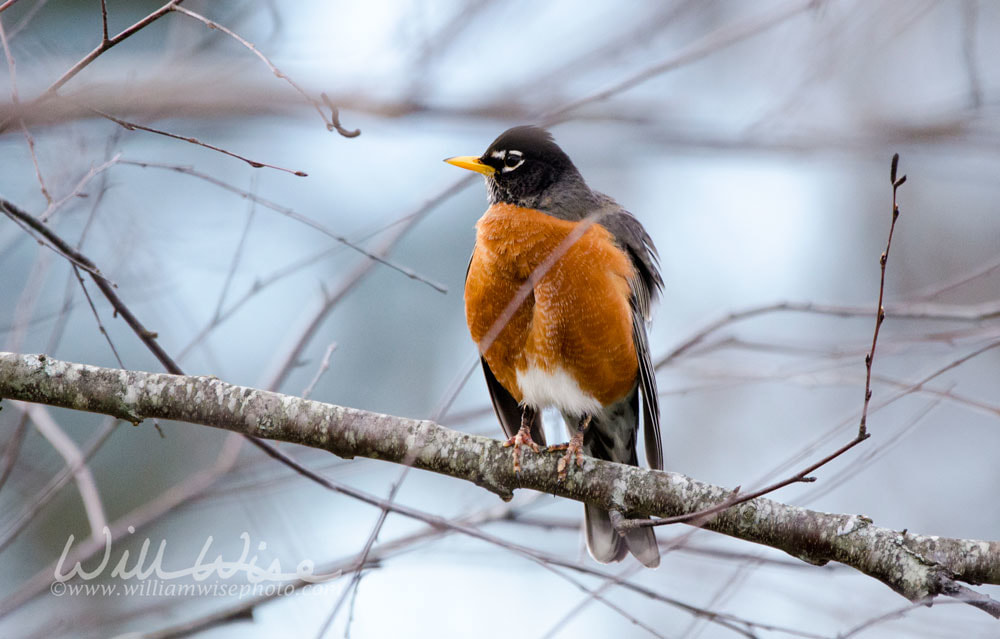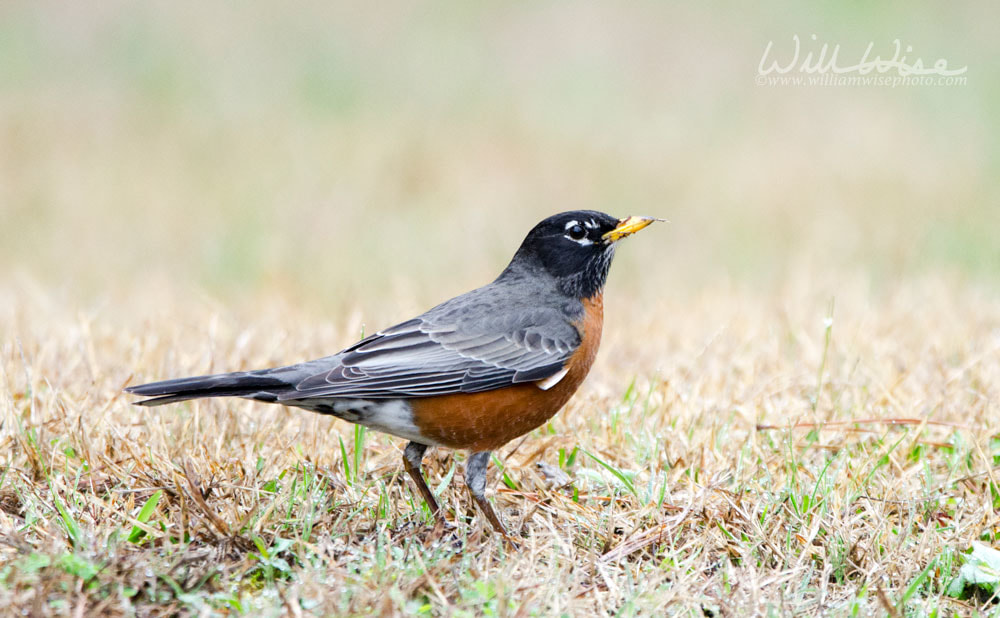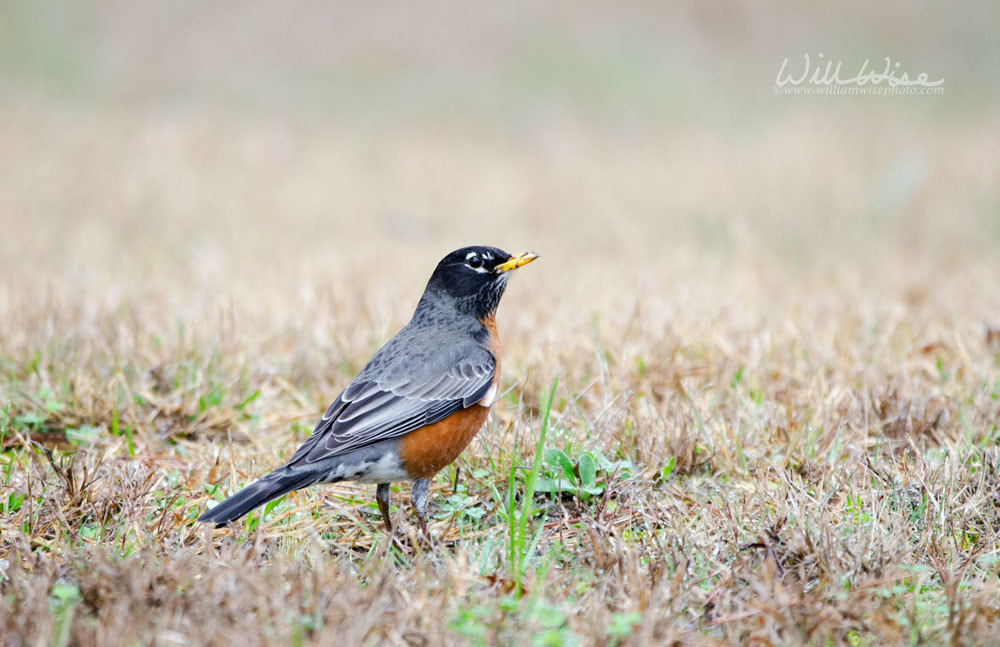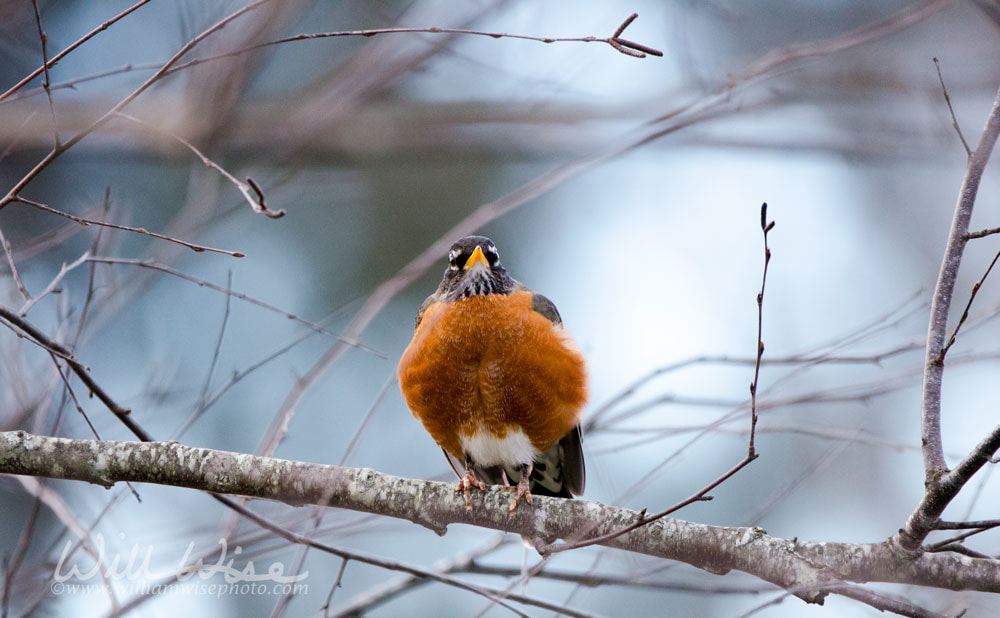|
The hardships freezing winter temperatures drives down the output of many nature and wildlife photographers. While the prospect of capturing a beautiful, snow-laden winter landscape may be motivating, the cold toes and hands often keep us indoors. But thankfully seasons change and the signs of spring are beginning to arrive. Genesis 1:14 "…and let them be for signs, and for seasons, and for days, and years..." While the quoted verse is spoken in regards to astronomy, it is also quite fitting ornithologically. Sure, the warmer temperatures, the longer daylight hours, the glowing gold Daffodils and the white bursting forth of the Bradford Pears should be signal enough that spring is springing, but the increasing number of worm-hunting Robins is a confirmation. All signal that the time of springtime photography approaches! The American Robin is the stereotypical bird of spring. Although the Robins do not completely disappear for the winter here in the southeastern United States, there is a definite upsurge in the spring. On a few recent mornings I've come outside the animal shelter for dog photography and the lawn is covered in Robins; twenty, thirty, forty, fifty at a time; heads cocked downwards as they hop around. It is hard to not become stereotypical when describing the Robin, but that is what they are: stereotypical! There is a reason every narrative describes "Robin Redbreast" in the same manner – the early bird, the sign of spring, the cheery vocalist – because that is what she is!
It is hard to not become stereotypical when describing the Robin, but that is what they are: stereotypical! There is a reason every narrative describes "Robin Redbreast" in the same manner – the early bird, the sign of spring, the cheery vocalist – because that is what she is! So instead of trying to write a new narrative, I simply quote the experts: “The quintessential early bird, American Robins are common sights on lawns across North America, where you often see them tugging earthworms out of the ground. Robins are popular birds for their warm orange breast, cheery song, and early appearance at the end of winter.” www.allaboutbirds.org
0 Comments
Your comment will be posted after it is approved.
Leave a Reply. |
Categories
All
Archives
September 2025
|
|
All content is ©williamwisephoto.com. Please don't steal images. My images are available at dreamstime.com. Stock sales go into the shelter photography program.
|
In December 1993 I came to know the Designer and Creator of this wonderful planet and its creatures: Jesus Christ.
|
Donations help support the animal shelter adoption photography equipment and adoption website hosting and domain fees. Thanks for your support!
|






